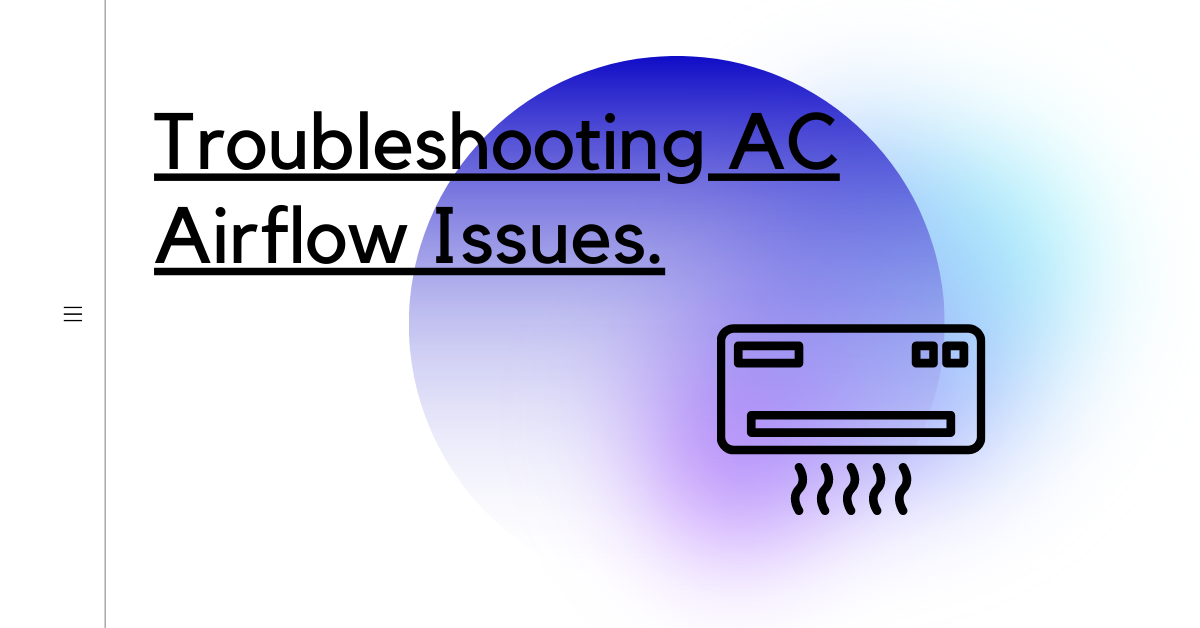Blog
Troubleshooting AC Airflow Issues.
Airflow issues can be a common issue in air conditioning systems, that’s why it is important to understand troubleshooting AC airflow issues. Poor airflow can result in decreased comfort levels and higher energy bills, and it can also put strain on the system which can lead to more serious problems over time. In this blog post, we will discuss some troubleshooting steps you can take to identify and address AC airflow issues
Step 1: Check the air filter
One of the most common causes of airflow issues is a clogged or dirty air filter. A dirty air filter restricts the flow of air into the system, causing it to work harder and reducing its efficiency. Check the air filter and replace it if it is dirty or clogged. We recommend checking and replacing the air filter every 1-3 months, depending on usage.
Step 2: Inspect the duct-work
Leaky or poorly insulated duct-work can also cause airflow issues. Check the duct-work for any visible leaks, holes, or disconnected sections. Seal any leaks with duct tape or mastic sealant and ensure that all connections are tight. You can also improve insulation by wrapping the duct-work with insulation material.
Step 3: Clean the vents and registers
Dirt, dust, and debris can accumulate in the vents and registers over time, blocking airflow and reducing efficiency. Clean the vents and registers with a vacuum or brush to remove any debris and ensure proper airflow.
Step 4: Check the blower fan
The blower fan is responsible for circulating the air throughout the system. If the fan is not functioning properly, it can cause airflow issues. Check the blower fan for any visible damage or debris, and ensure that it is running smoothly. You may also need to check the motor and belts for any signs of wear and tear.
Step 5: Consider the system size
If all of the above steps have been completed and the problem still persists, it may be due to an undersized or oversize AC system. An undersized system cannot effectively cool the space, while an oversize system can result in short cycling and decreased efficiency. Consult with an HVAC professional to assess the system and determine if it is appropriately sized for the space.
In conclusion, airflow issues in air conditioning systems can be caused by a variety of factors, ranging from a clogged air filter to an improperly sized system. By following these troubleshooting steps, you can identify and address airflow issues and improve the efficiency and comfort of your AC system. However, if the problem persists or if you are unsure of how to proceed, it is always best to consult with a qualified HVAC professional for further assistance.


